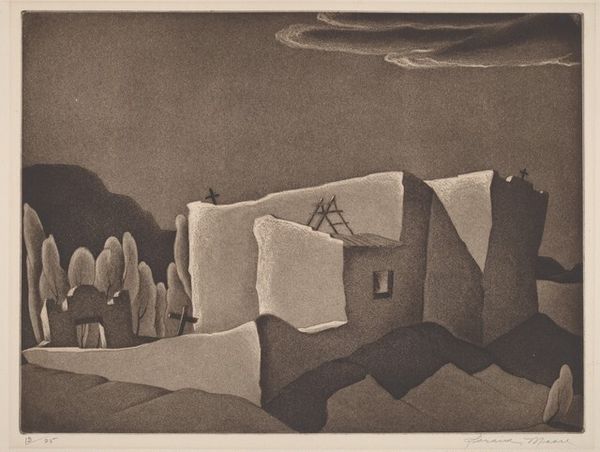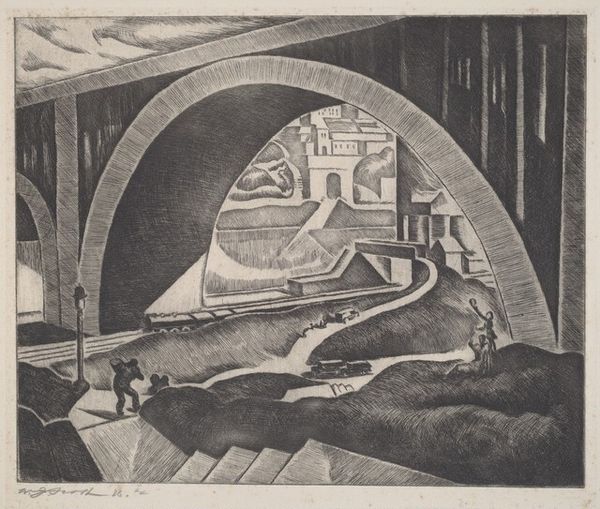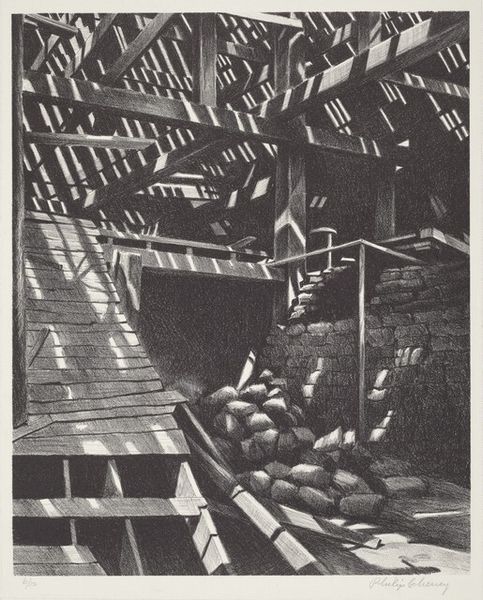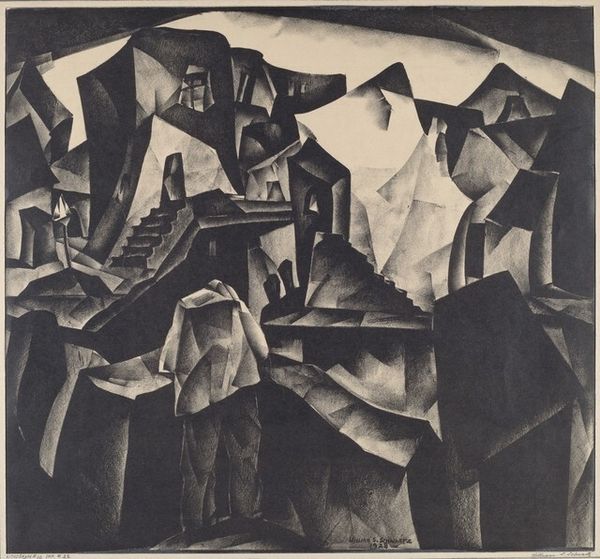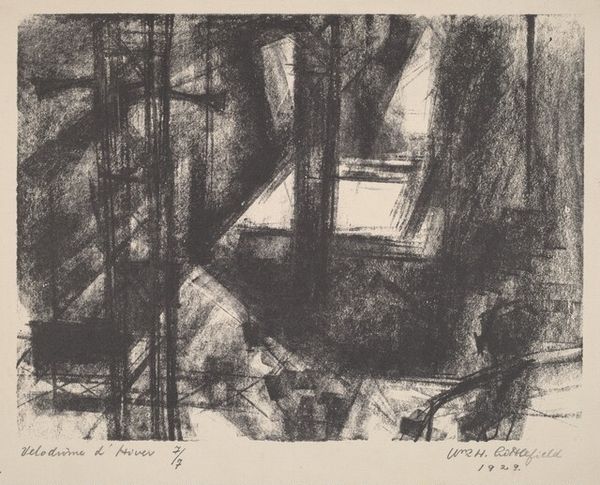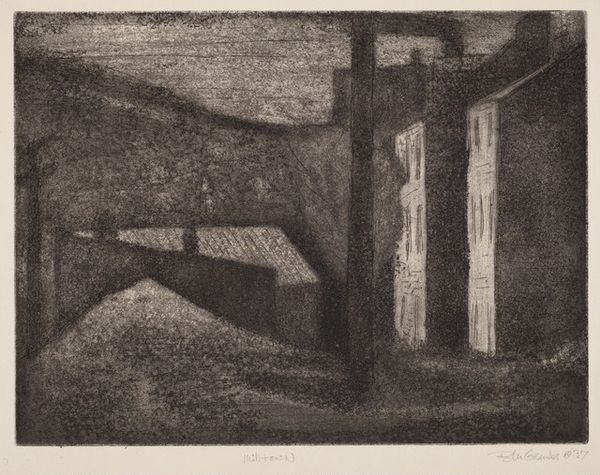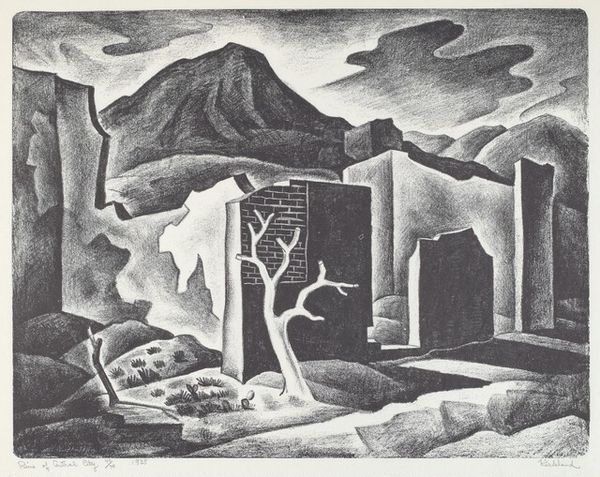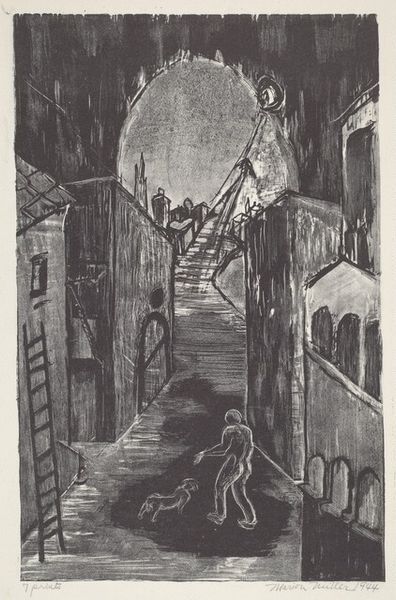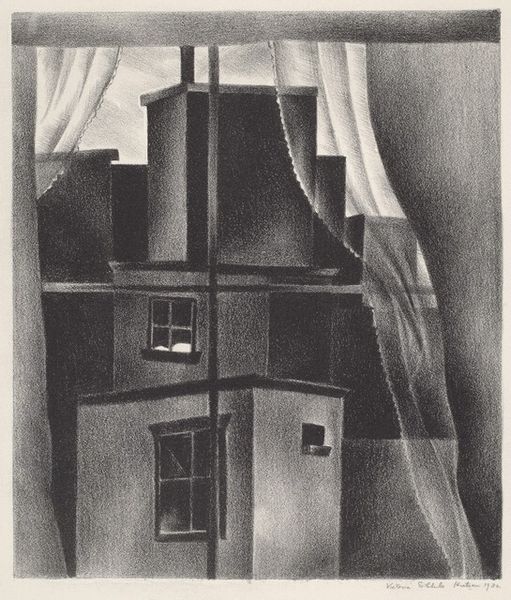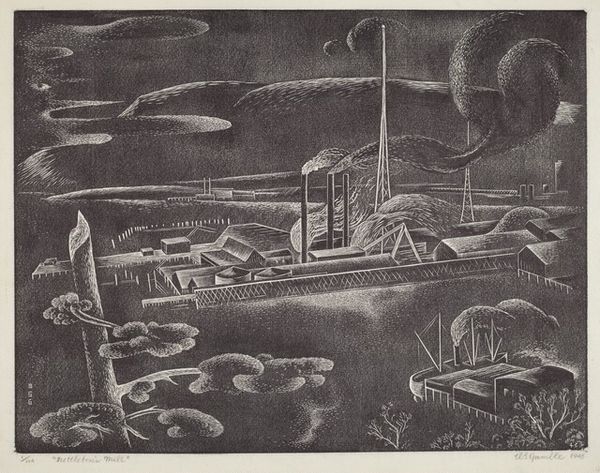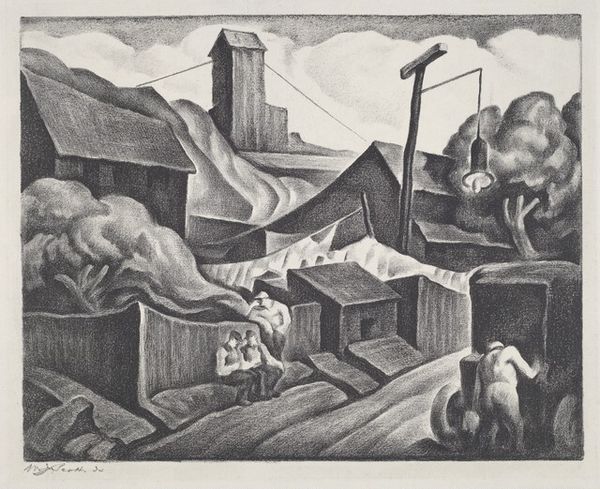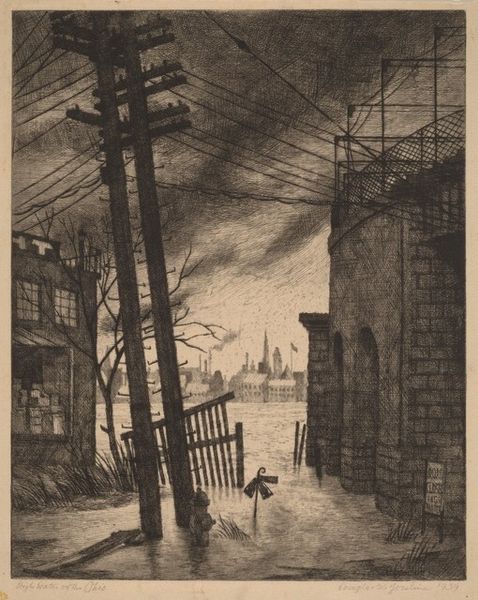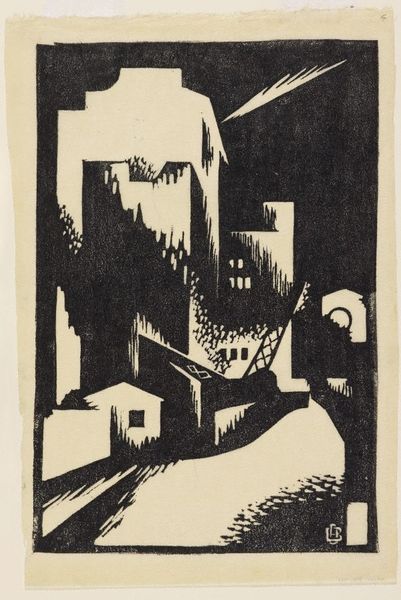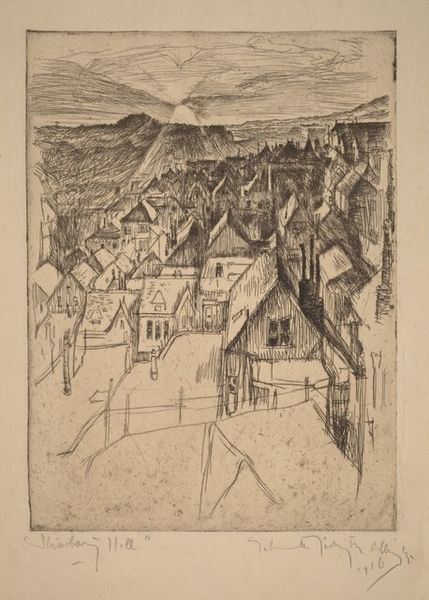
print, etching
# print
#
etching
#
mexican-muralism
#
cityscape
#
realism
Dimensions: Image: 225 x 270 mm Sheet: 320 x 342 mm
Copyright: National Gallery of Art: CC0 1.0
Editor: We’re looking at “Mexican Village,” an etching made around 1936 by Harry Hering. It depicts what appears to be a rural village nestled in the mountains. I’m struck by its almost dreamlike quality, despite the very grounded subject matter. What do you see in this piece? Curator: I’m drawn to the way Hering uses light and shadow. The darkness that dominates the composition makes the bright white of certain buildings feel almost… celestial. The burro at the top center seems like it’s glowing. Consider the burro as a potent symbol, representing labor, endurance, and even poverty in Mexican culture. It echoes images in Mexican muralism with figures such as Diego Rivera, creating a conversation with cultural memory and collective identity. What do you make of the print medium? Editor: It does give the image a kind of aged quality. Do you think that was intentional? Curator: Possibly. Etching, with its fine lines and tonal range, allows Hering to capture a certain textural richness. The ruggedness of the landscape, the rough-hewn buildings…it all speaks to the enduring spirit of rural communities. What feelings does it evoke in you? Editor: A sense of quiet resilience, definitely. And I hadn't thought about the donkey in terms of Mexican culture, but that adds a whole other layer of meaning to the scene. Curator: Precisely! Images are never neutral; they are repositories of meaning passed down, transformed, and reinterpreted across time. Understanding those layers unlocks so much. Editor: I’ll certainly look at etchings, and donkeys, differently from now on. Thanks for sharing your insights! Curator: My pleasure. It's been enriching exploring those layers with you!
Comments
No comments
Be the first to comment and join the conversation on the ultimate creative platform.
